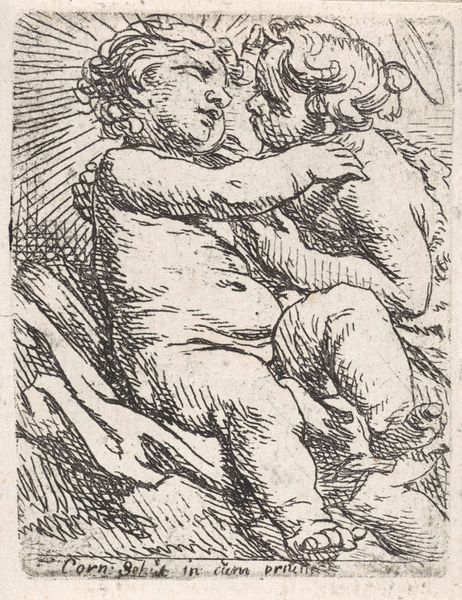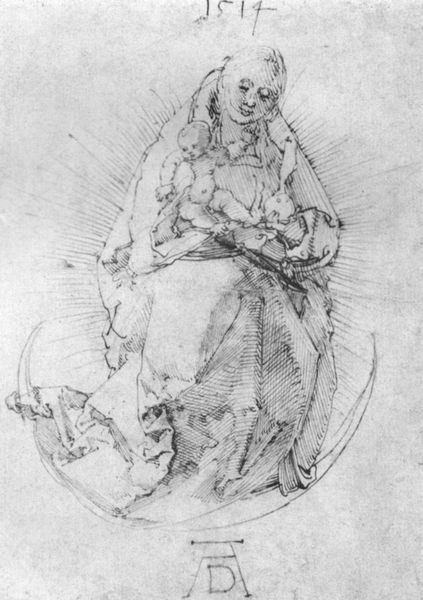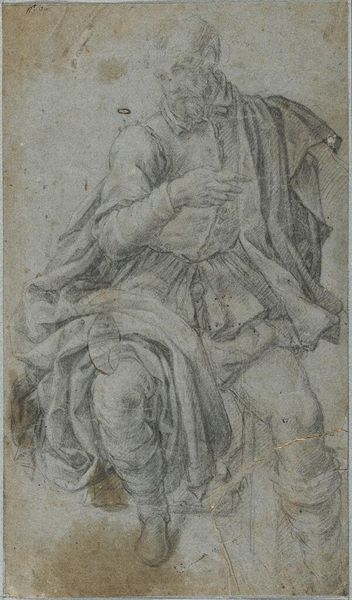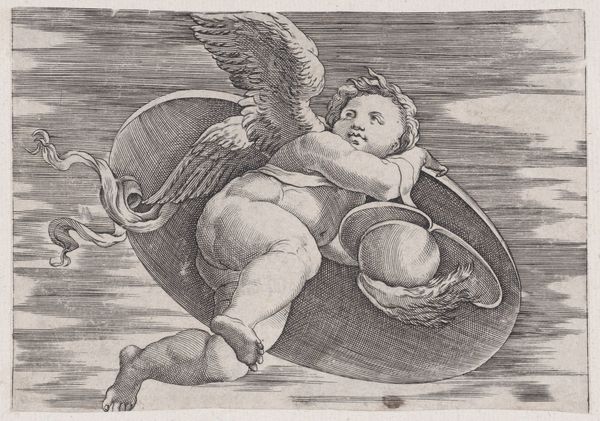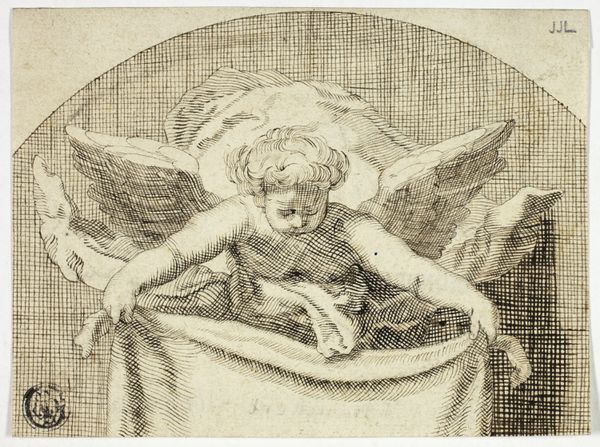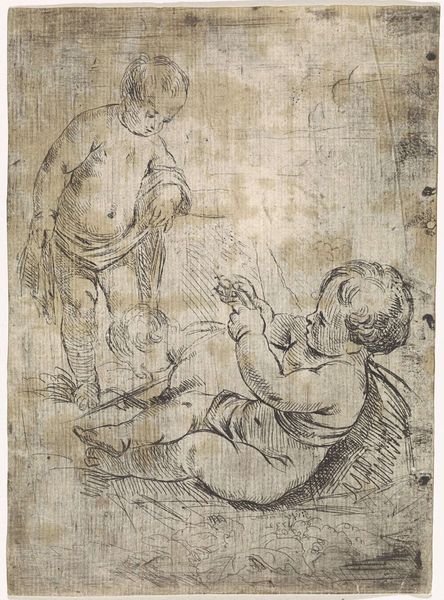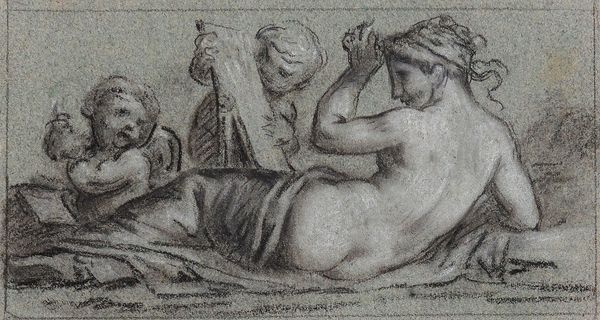
drawing, charcoal
#
portrait
#
drawing
#
charcoal drawing
#
figuration
#
jesus-christ
#
charcoal
#
northern-renaissance
#
monochrome
#
nude
#
monochrome
Copyright: Public domain
Albrecht Dürer created this drawing, "Christ Child", using pen and ink on paper, and it resides in the Bibliothèque nationale de France. The drawing's strength lies in its dynamic composition and its destabilization of established religious iconography. We see this through the use of hatching and cross-hatching to create a detailed and three-dimensional effect, highlighting the baby's plump, realistic form. The texture of the fabric and the woven basket above his head are meticulously rendered, inviting a close inspection of surface and depth. What is particularly striking is how Dürer complicates the expected symbolism. Instead of a halo, the child holds a woven basket above his head. This subverts the traditional representation of holiness, engaging with contemporary debates about the nature of divinity and representation. The naturalism combined with symbolic disruption challenges fixed meanings, reflecting broader philosophical concerns of the Renaissance. Ultimately, it's the tension between realism and symbolic innovation that defines this piece, inviting us to continually question and reinterpret its meaning.
Comments
No comments
Be the first to comment and join the conversation on the ultimate creative platform.


